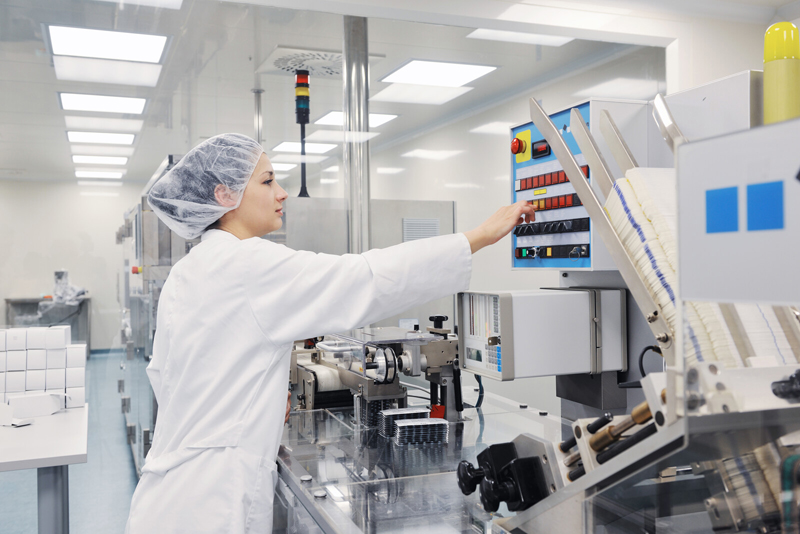The healthcare environment is highly sensitive. You cannot afford any kind of contamination that could compromise patient safety. The physical cleanliness of the healthcare environment is as significant as the “clean” medical data provided by a medical transcription service, when it comes to ensuring optimum patient care, safety and satisfaction.

Patient care and patient satisfaction are clinical responsibilities that hospitals and other healthcare facilities have to fulfil. During a patient’s stay, the environmental and non-clinical aspects are what make the patient experience good or bad. Factors such as the hospital’s physical environment and the team that maintains it also play a critical and often under-appreciated role. Any type of medical facility where you provide care to patients requires a high level of performance, cleanliness and safety. Those receiving treatment or just visiting a hospital or other such healthcare environment are vulnerable to infection, which makes effective cleaning processes indispensable in corridors, waiting rooms, reception area and the wards. There is no doubt that a hygienic and warm environment is aesthetically important as well because it will help generate a feeling of wellbeing and trust in the patients and those who accompany them.
Unfortunately, almost a hundred thousand people die every year in the U.S from hospital acquired infectious diseases, according to CDC (Centers for Disease Control and Prevention) statistics. This points to the failures of traditional cleaning systems. Here are some hospital cleaning best practices advocated by North American public health officials and Kaviac Cleaning Systems, a provider of complete cleaning systems.
- Focus on the most touched surfaces: These surfaces include doorknobs, phones, bed rails and remote controls in patients’ rooms. Dangerous bacteria are most likely to exist on these high-touch areas.
- Start with clean areas and go on to the dirtier ones: Often cleaning staff start from the dirtiest places such as the rest room and then proceed to the cleaner parts of the facility. This is to be avoided because you could more easily spread disease-causing agents from a bathroom or kitchen where mops and rags are used. In hospitals, cleaning should start from the rooms of the healthiest patients and then go on to the rest rooms and the wards with the sickest patients.
- Use gloves properly: If gloves are used improperly, bacteria will spread dangerously. Ideally, different gloves should be assigned for patient rooms, household tasks, and jobs involving heavily soiled items. Gloves should always be changed between patients. Never wear them in hallways, and change them when moving from a residential area to a shared restroom space. Cleaning staff must wash their hands after removing gloves.
- Avoid cross contamination: Mops and rags could spread contamination and must be disposed of carefully. Now, revolutionary techniques of spraying, vacuuming, and disposing of contaminants are available that will ensure that bacteria never leaves the room.
- Control air pollution: Bacteria must be kept out of the air stream. To ensure this, cleaning staff must roll dirty bedclothes away from their bodies before placing them in linen bins. Trash bags should be tied carefully without releasing the excess air in the bag.
- Minimize chemical content: It is best to choose cleaning solutions with less chemical content. This will ensure that abrasive chemicals do not irritate patients’ nasal passages or harm the skin of cleaning staff.
- Dispose of contaminated materials safely: It is important to ensure that when contaminated materials such as soiled linens, contaminated biological materials from clinics, and dirty cleaning fluids are removed, there is no chance for contamination.
Ideally, the healthcare facility should have a regular program of infection control education and training for their staff. In addition, they should make sure that the infection control practices and standards are being met through a program of regular checks.
To ensure a safe and efficient healthcare environment, here are some steps administrators can take:
- Safety: Safety is very important in a healthcare set up. There are various measures that help you promote safety. For example, the staff should be provided with comfortable attire and shoes so that they can work for longer hours without any discomfort. The shoes should provide protection from slips and falls, and from sharp objects. Make sure that the exam rooms and waiting rooms do not have sharp edges or objects that could harm patients and you should also have a clear and open space for walking freely between rooms.
- Good programs: Ensure that all your papers are kept organized and you have access to the medical records of your patients at your disposal, this is very important. Advanced technology like ERP software allows you to provide information faster and also helps your employees work more efficiently.
- Separate areas for patients: Often when you enter a medical facility, multiple patients occupy the same space. This is a dangerous practice that can produce undesirable results. A good way to avoid the spread of a virus or airborne disease is to keep sick patients separate from those who have just come for a regular check up or for a follow-up visit.
- Qualified and experienced staff: To ensure efficient patient care, it is important to have skilled doctors and nurses. Due to the high demand for doctors and nurses, there are chances of higher turnover rates. One way to reduce the turnover rate in your practice is to keep your employees happy by offering good salary, proper treatment of personnel on the job and benefits that extend beyond what they would find elsewhere. However, make sure to employ skilled and experienced nurses and doctors for optimal results.
Healthcare units have various activities like providing quality care, documentation of medical records, monitoring patients, and so on. Reliable support is available in the form of outsourced services from reputable organizations. A medical transcription company providing EMR-integrated medical transcription services would be a good partner when it comes to healthcare documentation requirements. Similarly, cleaning services are also provided by dedicated agencies that use the best cleaning products and systems to help hospitals and other healthcare facilities maintain a clean and healthy environment.


